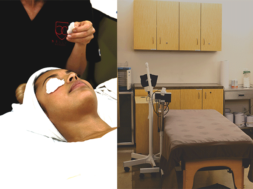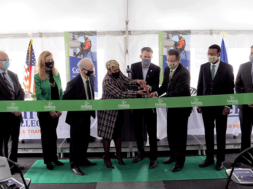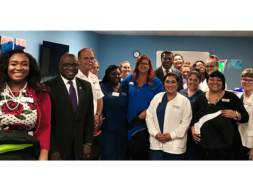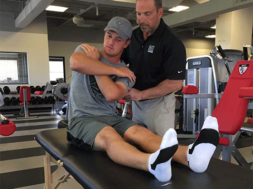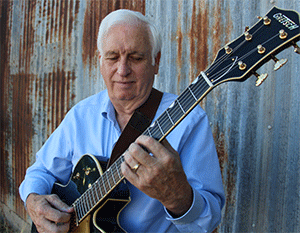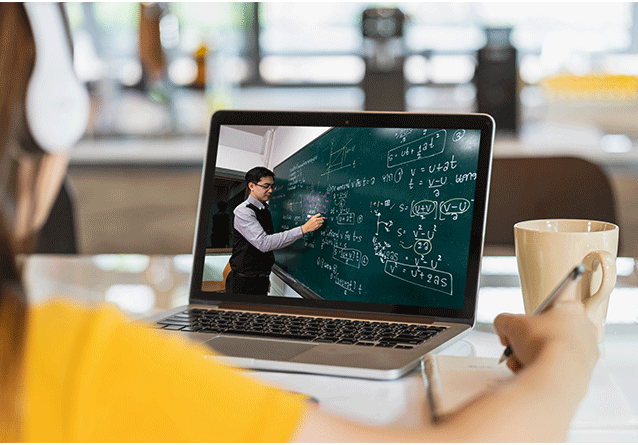
By Larry Banks, Ph.D., Teaching and Learning Consultant, EduShare, LLC
It is about learning, not technology. It is how faculty use learning technologies to motivate, engage, and build student confidence at a distance. The combination of instructor-led (synchronous) and online (asynchronous) course delivery (blended learning) has great promise in terms of student achievement and learning if instructors combine select learning principles with learning technologies and learning intelligence. Internet technologies create radical new opportunities for institutions, faculty, and for students. However, virtual classroom instruction has its nay-sayers and attempts to deliver hybrid education and training have decidedly mixed results.
The challenge for faculty is how to motivate, engage, design synchronous and asynchronous learning activities, and form confidence building relationships with remote students.
As John Cone, former head of learning at Dell Computer, said, “Online learning is like the microwave oven: It is not a complete replacement for the traditional model, but it does some things better.” Students like the flexibility of online learning. Yet, there are times when people need to see each other face-to-face for optimal learning. A social and personal connection with other students and instructors inspires confidence and motivates learners. The traditional in-person classroom is hard to leave behind. Because humans are social creatures, this model has endured for centuries, and not much has been changed since the oldest university was established. Learning models were built to support groups that are confined to one place, learning at one pace, following one path and at one time.
The pandemic caused an abrupt suspension of in-person instruction for the time being. Many institutions converted to online, blended, hybrid, and other forms of remote instruction. The pivot to remote instruction has profoundly affected faculty and students. In a recent survey, 75% of faculty cited preparedness for synchronous (virtual classroom) and asynchronous distance instruction as the most challenging issue. The challenge was (and is) to prepare all faculty members who had not previously taught online classes by giving them a primer on the basic elements of good distance instruction, familiarizing them with available learning tools, and then charging them with converting their courses for remote instruction.
Before the pandemic and due to budget cuts, many higher education institutions were financially struggling to offer programs and learner services. The pandemic has merely accelerated the integration of various learning technologies and modalities. While schools were already piloting and experimenting with new learning modalities and approaches to reduce instructional costs and improve learning outcomes, COVID-19 forced college instructors and millions of students into virtual learning, a realm most of them had not chosen and with which many of them were unfamiliar.
It takes intellectual effort, as well as a great deal of time to provide quality education and learning, whether online, in an in-person classroom or both. While the financial benefits of online learning may appear to be more favorable to learning organizations, the lack of social interaction, technology and a preference for the traditional classroom environment have slowed the adoption of blended learning and virtual classrooms. The pandemic has merely accelerated the implementation of hybrid learning modalities. Now, many secondary school administrators suggest that combinations of remote instruction are the new normal.
Blended or hybrid delivery is defined as asynchronous, internet technology combined with instructor-led, live, or virtual classroom instruction.
Some institutions blend both synchronous and asynchronous technologies to deliver content. Synchronous and asynchronous learning models are extending the learning continuum. Higher education’s new normal will most likely be combinations of virtual classrooms for didactic instruction, on-campus small groups of in-person simulation, or labs for hands-on skill development, with secure remote testing and assessment to measure student outcomes.
As it pertains to an effective learning environment, Cornell University said, “Make it real, make it useful and make it user friendly.” The conventional view of education in the 20th century was centered on the physical classroom and lecture – the classic teaching model for course delivery. In the 21st century, virtual classrooms for lectures, combined with engaging and motivating simulated learning technologies makes it possible for students to learn new knowledge at a distance – synchronously and asynchronously.
One-way lecture via video conferencing technology like Zoom, is not effective hybrid learning, just like posting a journal article in the school’s learning management system is not online learning. Effective distance education is not online reading and or listening to a sage on a virtual stage. Student achievement and satisfaction depend upon faculty who thoughtfully and intentionally design their learning plans by deploying best practice learning principles and technologies, and use assessments (intelligence) to provide prompt, confidence-building feedback to students. In other words, LO=(LP+LT) LI (LO=learning outcomes; LP=learning principles; LT=learning technologies, and LI=learning intelligence). Using this formula, Bryan University, improved retention rates from 45% to 74% and it is still climbing. Bryan University’s learning model has always been hybrid. The institution uses Zoom for weekly live (synchronous) lectures by instructors, combined with asynchronous, online course work. Eric Evans, CEO, Bryan University said, “There is power in analyzing learner data from a learning science lens to actively inform learning delivery and interventions. Outcome optimization is finally here.”
For years now, the lines have been blurring between online education and the traditional classroom. Years ago, Arthur E. Levine said, “Major forces have the power to transform the nation’s colleges and universities.” Levine suggested that there would be a convergence of publishing, broadcast, telecommunications, and education. Welcome to the era Classroom 21 – combinations of two-way engaging content and remote instruction.
That said, staying motivated, the lack of a regular class structure, and distractions are often cited as barriers to learning in virtual classrooms.
Students suggest that it is not the same as getting up, getting ready, driving to class, and then sitting in class to learn. They miss the presence of the instructor and peers, and an opportunity to get immediate feedback from their instructor concerning their understanding. The loss of authentic, hands-on experiences that help students to develop understanding of subjects is frustrating to learners. A Tyton Partners survey specifically asked students “what diminished their experience with the remote courses.” Students cited the lack of interactivity, with 65 percent saying that “opportunities to collaborate with other students on coursework.”
No matter the learning model, good teacher characteristics (according to students) include:
- Being knowledgeable, organized, and in control
- Getting students actively involved in learning
- Helping students understand and learn the course objectives and goals
- Being a facilitator, not a sage on the stage
- Stimulating discussions
It does not matter the learning modality; teachers are the secret sauce to motivating students. All the attributes described above are controllable and faculty who know their subjects, actively engage students, and facilitate learning will do well, no matter the learning model. Instructors can and should exhibit good teacher characteristics whether in a virtual classroom or on campus. My research on blended learning (Brick, Click, or Brick and Click, 2004) suggested it does not matter to students if a class is blended, online, or traditional classroom learning … if faculty provide prompt, quality feedback. As faculty develop lesson plans, no matter the learning modality, they should ask the following questions:
- Do they have strategies to encourage open communication among students and between students and the teacher?
- Do they have appropriate feedback mechanisms in place so that the feeling and the needs of the student are communicated in a meaningful and timely manner?
- Do they have collaborative learning strategies in their lesson plans – such as group work in breakout rooms?
- Do they recognize students as individuals with diverse backgrounds and needs as well as classroom participants?
Creating and sustaining motivation is challenging and increasing student engagement in remote classes is an instructional priority, followed by building courses that can be transitioned between face-to-face and online environments. To improve remote teaching, instructors should:
- Take advantage of virtual classroom capabilities (breakout rooms, polls, audio, and video presentations)
- Focus on the few course objectives (objectives that equal 80% of expected course outcomes)
- Create and nurture a collaborative learning environment
- Use six or more of the digital best practices (see Digital Promise)
- Structure delivery to be “learn it, practice it, and do it”
- Focus on need to know, not nice to know course objectives
- Present current and relevant content that relates to the workplace
Effective teachers are excellent communicators. Communication is giving, receiving, or exchanging ideas, information, signals, or messages through appropriate media, enabling individuals or groups to learn by receiving information, expressing emotions, and persuading. Communicating concepts and course topics with students in virtual classrooms is even more challenging given the age and preference for receiving information. As a result, engaging, communicating, and interacting with diverse students requires intentional and thoughtful decision making about how students can learn what they need to know to be successful students.
Remote faculty can connect and build virtual relationships by providing prompt, confidence-building feedback. Stephen Covey said, “Next to physical survival, the greatest needs of a human being are psychological survival, to be understood, to be affirmed, to be validated, and to be appreciated.” “I believe a good pat on the back is one of the greatest encouragers we have,” said John Wooden. Feedback that builds student self-concept and confidence starts with words like:
- You are right on track
- That is exactly right
- You make it look so easy
Nicol (2007, p205) describes seven principles of good and effective feedback:
- Clarifies what constitutes good performance, referring to learning outcomes, criteria, and expected standards
- Helps students develop self-assessment (reflection) in learning
- Gives high-quality information to students about their learning
- Encourages instructor and peer discussion about learning
- Encourages positive motivational beliefs and self-esteem
- Provides opportunities to improve work quality and close the gap between current and desired work quality
- Provides information to teachers that can be used to help improve feedback, assignments, and assessment.
In conclusion
If intentionally designed, virtual classrooms can be more than a “microwave oven.” Moreover, forms of blended and remote learning will most likely become the new normal for institutions of higher learning – because it does some things better. Students like the flexibility of hybrid learning but miss talking with other students and faculty in-person. That said, faculty can connect and build relationships with remote students by creating a positive and confidence building learning environment. It is all about how faculty use learning technologies to motivate, engage, and build student confidence at a distance.
References
Banks. L. V. (2004). Brick, click, or brick and click: A comparative study on the effectiveness of content delivery modalities for working adults. ProQuest Dissertations and Theses. (Accession No. 3122174)
Dynamic Experiential Learning (DEXL). Interviews with instructional designers. https://dexl.com/
Digital Promise – Best Practices – Reinvent the Classroom https://digitalpromise.dspacedirect.org/handle/20.500.12265/69
Institute of Education Sciences (May 2019). Using Technology to Support Postsecondary Student Learning. What Works Clearinghouse, Department of Education.
David J. Nicol & Debra Macfarlane‐Dick (2006) Formative assessment and self‐regulated learning: a model and seven principles of good feedback practice, Studies in Higher Education, 31:2, 199-218, DOI: 10.1080/03075070600572090
DR. LARRY BANKS is a teaching and learning consultant with EduShare, LLC, where he specializes in blended and online learning and teaching strategies to improve student outcomes. Banks previously was Provost at Ameritech College of Healthcare, Campus President Argosy University, Associate Provost at Western Governors University, and Provost at Rocky Mountain University of Health Professions.
Contact Information: Dr. Larry Banks // Teaching and Learning Consultant // EduShare, LLC // 801-792-4325 // lvbanks@msn.com // edushare.info

